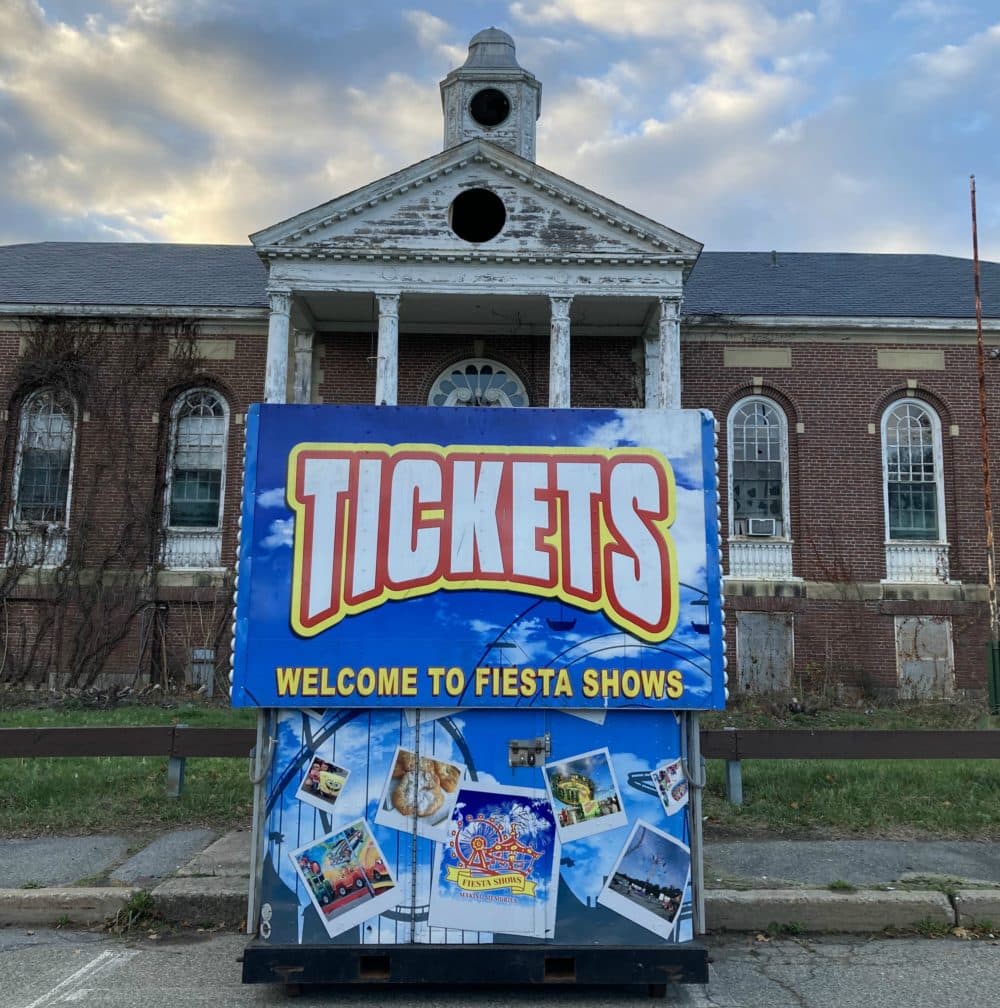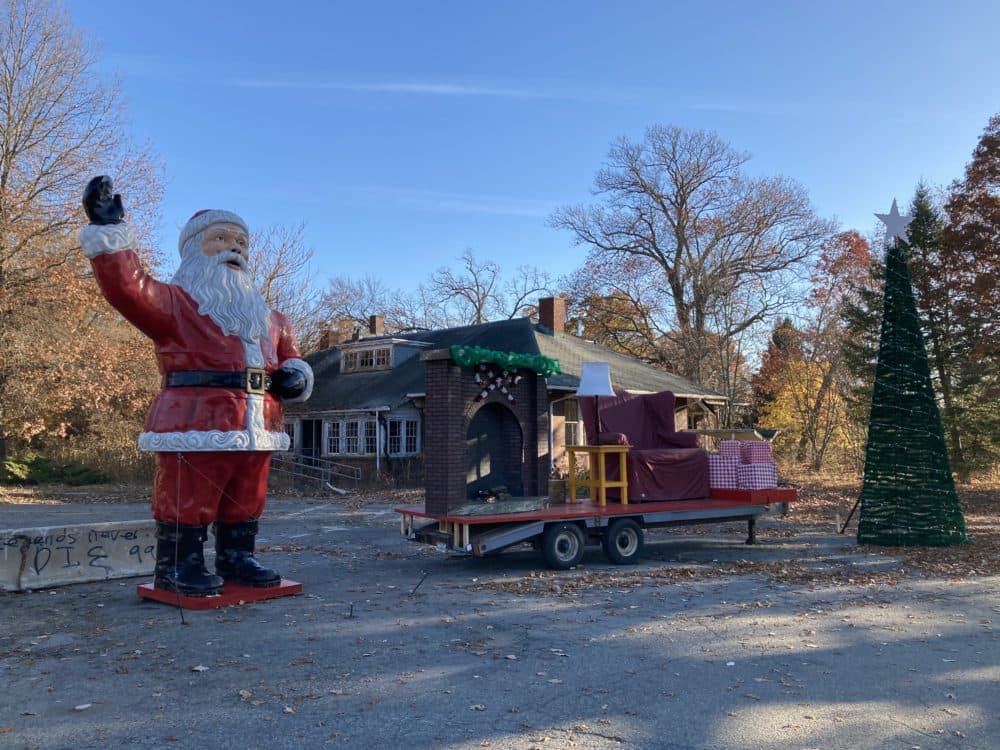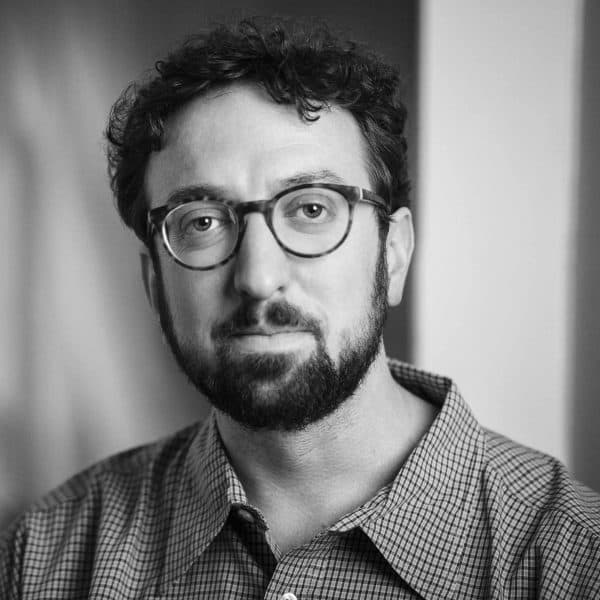Advertisement
Commentary
A Holiday Light Show In Waltham Obscures A Devastating History

Last month, my city’s Lions Club was looking to do something nice for the holidays, while fundraising along the way, so they decided to set up a drive-through light show on the grounds of a former state institution, the Walter E. Fernald Developmental Center. There, among obscene graffiti and falling bricks, revelers will drive through a landscape where the truth is shaded into the night: a place where thousands of disabled people were locked away, spending lonely holidays, far from their families. A place where eventually, they died.
It’s a super-spreader event too, replete with bus and limo rentals, and that brazenness ties together past and present.
My city, Waltham, is facing down another massive spike in cases of COVID-19, a virus that has disproportionately killed disabled people. But to the organizers, that is no matter. As their public relations person told a news site, they picked the site for its easy logistics. Easy for them.
In the battle between basic respect and the most convenient spot to drop an oversized Santa, disabled people lose.
The light show, set to begin Nov. 27, signifies something big — something made more acute in the time of the coronavirus pandemic — that many of us already know. Disabled people do not get to have a history, and we are shamed for daring to demand that we deserve one that truly represents our story in this nation.

Hundreds of other former institutions across America once warehoused disabled people. There, people who were seen as different were removed from society, often tortured and sterilized, and left for dead. This was all part of our society’s dedication — oft-denied with vehement claims that we are not Nazis -- to the very eugenic ideas America gave to the Nazis in the first place. Indeed, the Fernald was the nation’s leading institution, pushing for the segregation of disabled people from society, which led to countless deaths.
If you have any doubts about the connections between past and present, take a look at President Trump’s doctor-advisor Scott Atlas, the Stanford physician installed on the White House’s coronavirus task force in August. Just this week, Atlas encouraged people to invite their older relatives — many of whom are disabled — over for their “final Thanksgiving." Stanford was quick to denounce his comments, but look a little deeper and ask where his ideas come from in history.
Abandoned institutions speak ruthlessly to the worst of what humans are capable of, and we take great pains to erase that history rather than confronting it. These sites are left to vandals, bulldozed for condominiums or repurposed into self-contained gated communities. Disabled people rarely have a seat at the table when questions about the future of these places are in play, because non-disabled people fear that we will leap out of their stereotypes of us as damaged and diminutive and tell them that we see them for what they are. And what fun is that?
History in hand, armed with its lessons, is how we lay the foundation for a future where we are not silenced.
People in power — white men and women without disabilities — tell us when these institutions are beyond repair. They tell us when they are ready for other white men without disabilities to come in and re-develop them. They tell us where the little plaques can go that mention what really happened in these places. And they react with indignation when challenged. After all, they say, they knew someone disabled once.
Their discomfort is easy to understand even if their responses are not.
Where do the warehouses for thousands of the disabled dead fit cleanly into our relentless narratives of American exceptionalism? They ring too true for easy bluster. This history isn’t nice. Nor, as has often been said about the important things, is it really about history. Having a claim to a disability history is really a claim to disability rights.
Historians avoid counterfactuals, but I am willing to take one up. I have no doubt that a full reckoning with disability history would have led us to create a society better than this one, where the deaths of disabled Americans — who are often still forced to live in institutional settings — are as many as the anonymous ditches bulldozed for bodies on Hart Island in New York.
I have no doubt that a full reckoning with disability history would have led us to create a society better than this one
And maybe a glimpse of that future is starting to emerge. The strides made by disability rights activists, inserting themselves into our fundamental conversations about equality, are a sign that we will not remain in the shadows.
Yet without a specific claim to our history, we will be trapped in needless cycles of reinvention, or ghettoized only into the history of what was done to us, and not what we have done for others. Historians and writers, many of them disabled like myself, are starting to change that, too. One need only look at the universe of stories being unlocked and shared on Twitter by scholars like Jaipreet Virdi, the writing of people like Aparna Nair, or the work done by the Paul K. Longmore Institute at San Francisco State. And there is the triumph that is the recent film "Crip Camp." But it’s early yet, and the victories in claiming our stories and history for our own still feel fragile and too hard-fought.
More — much more — is needed. Trapped in self-aggrandizing views about the power of charity, too many people believe they can perpetrate violence to our past through erasure and pity, as long as they are giving away a few pennies in the present. Here in my town, that means that we sit, awaiting even a single note from our Lions Club, who will not write us back. Nor will our mayor, who defiantly told councilors the other night, “I am looking to the future.”
And that is what they do not understand. History in hand, armed with its lessons, is how we lay the foundation for a future where we are not silenced. We’ll be there when our mayor, and others like her, get here.
